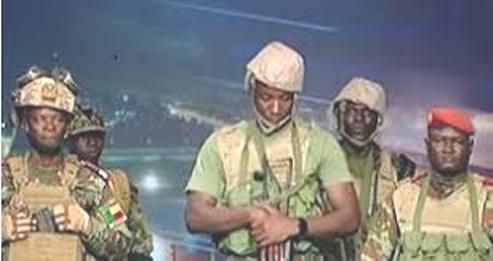LAGOS MARCH 2ND (NEWSRANGERS)-The U.S. for the first time has approved the direct delivery of Stinger anti-aircraft missiles to Ukraine as part of a package approved by the White House last week.
During the Cold War, the CIA covertly supplied Stingers to Afghan guerrillas fighting Russian forces. Now Ukrainian forces locked in an intensifying fight to repel Russia will get more of the shoulder-fired weapon, which has a 4-kilometer range.
With the Raytheon Technologies-made Stingers, Ukrainian forces gain a tool for fighting Russian helicopters being used to transport troops and as close-air support. They have relied on missile defenses and aircraft to, so far, keep Russian aircraft from completely dominating their skies.
“Once the Stinger’s employed, it has the ability to be a game changer,” said retired Army Lt. Gen. Jim Dubik, now a senior fellow with the Institute for the Study of War. “The Russians don’t have air dominance, but they do have air superiority ― and the Stingers won’t take that away, but it’ll be contested airspace, and that hurts the Russians’ ability to conduct operations and increases Ukraine’s ability to defend.”
There’s been a steady stream of new commitments from the European Union and western countries to send arms and other aid to Ukraine, which had asked for Stingers and Javelin missiles.
The Associated Press was first to report the Stingers would be part of a $350 million tranche of supplies U.S. President Joe Biden authorized last week. Defense News confirmed the report with an administration official granted anonymity to discuss the sensitive matter.
The U.S. decision follows Germany’s announcement it will send 500 Stinger missiles and 1,000 anti-tank weapons to Ukraine, marking a reversal of Germany’s long-standing policy of never sending lethal munitions to war zones.
The Baltic states have also been providing Ukraine with Stingers since January, and in order to do that had to get U.S. permission.
While it’s unclear when this tranche of U.S. aid will arrive, the Pentagon says it has not seen any Russian efforts to interdict western aid to Ukraine or problems with previous tranches.
“The assistance continues to flow, and we are comfortable that is it getting into hands that need it,” Pentagon spokesman John Kirby told reporters Monday.
Jim Townsend, who was the Pentagon’s top Europe and NATO policy official throughout the Obama administration, speculated that the previous U.S. reluctance to send Stinger missiles stemmed from a fear that, if Ukrainian forces did not mount as successful a fight as they have, the highly effective weapon could fall into Russian hands.
But now it’s time for Ukraine’s western allies to make sure Ukraine’s supply lines don’t run dry, and for Ukraine to get weapons and other gear it needs, Townsend said.
“Ukraine is great, but if they run out of ammunition, if their supply lines are cut, if Russians dominate the air, it’s going to be a different picture,” he said. “We’ve got to keep resupply routes open, and we’ve got to hurry. … We have Stingers in stock, and we’ve got to put them on trucks and get them the hell over there.”
This week, Russia has already targeted airfields and fuel facilities, in what appeared to be the next phase of an invasion slowed by fierce resistance.
Ukraine Brig. Gen. Kyrylo Budanov, head of that nation’s defense intelligence agency, told Military Times Monday morning the Russians could use missile barrages to continue to destroy Ukrainian airfields. That in turn could be used to choke off Ukrainian supplies.
Budanov said Ukraine could benefit from the U.S.-made Patriot, a sophisticated surface-to-air missile defense system that would take time for the U.S. to send. Meanwhile, Russia is getting close to air dominance, in spite of Ukraine’s anti-aircraft systems, bombers and other war planes.
Adding another challenge for Kyiv’s defenders, the Russians have moved their Pantsir-S1 mobile air defense systems closer to the city, according to Budanov. The system can track up to 20 tactical aircraft-sized targets at a range of 32-36 km.
“They almost control the sky,” Budanov said.
Air Force Times











